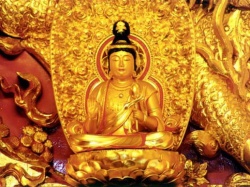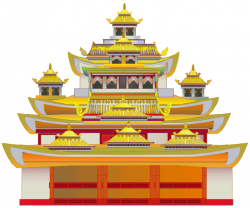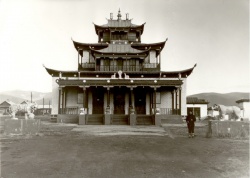The Threefold Nature Of Consciousness
As human beings, we express our Consciousness in three distinct ways. This threefold nature of Consciousness has been referred to in various ways in many spiritual, mystical, and religious traditions throughout time. Some have explained it as Body-Mind-Spirit, while in other circles it has been called the Law Of Three. Many traditions have described this aspect of Consciousness as the Holy Trinity - the Divine Father, the Divine Mother, and the Divine Child - symbolic descriptions for the manifestation of three vehicles of expression within one being.
The first way we express our Consciousness is through our Thoughts. In relation to the concept of the Divine Trinity, thoughts could be seen as the Creator God, God the "Father", as it has been termed in Christian traditions. Our thoughts precede all other ways in which our Consciousness manifests, either internally or externally. Everything that comes into manifestation in our external experience first existed at some point in time as a thought in Consciousness. Thoughts in and of themselves are purely non-physical and are not manifested as form in the material realm. They travel as electrical impulses in the synapses of the brain, and they do not arise from any pre-existing material things. Thoughts equate with the Mind in the Body-Mind-Spirit model of Consciousness. After arising within the Mind, our thoughts take on the role of Creator in our observed reality, as they do indeed create that which manifests within us and around us.
Emotions are the second expression of our Consciousness. They could be described as the internal manifestation of the reaction to our thoughts. As an internal expression that is felt within ourselves, emotions relate to the feminine principle of the Tao, the Yin polarity. In the Holy Trinity model, emotions are the Divine Mother, the Sacred Feminine of the Divine Family. In the Body-Mind-Spirit model, emotions are the Spirit, the felt presence of our experiences, which act as a balancing mechanism between our thoughts and our actions. Emotions are felt internally within our bodies through the creation of chemical transmitters produced by our brain and nervous system. This occurs after we have an initial thought about the concept or situation at hand. It is then internalized and felt with the body through the emotions.
It is interesting to note that in the Western Christian tradition, this feminine principle of our Consciousness has been removed from the Trinity and relegated to the genderless Holy "Ghost" or Holy "Spirit," connotatively suggesting that it is deceased, or at the very least, no longer in manifested presence. It has become a "ghost." The recognition of this "downgrading" of the Sacred Feminine aspect of emotion is important to keep in mind while reading further, as we will continue to see this concept symbolically repeated in significance ways in later sections.
The third aspect of the Trinity of Consciousness is our actions. Through our actions, we express our Consciousness in the external material realm in which we exist. Actions could be seen as the Divine Child of the Trinity, as they are the "offspring" of our thoughts and emotions. Actions are naturally equated with the active, masculine principle, the Yang energy of the Tao. To one degree or another, actions, as physical expressions, are carried out with our body. As such, actions are the Body component of the Body-Mind-Spirit model. In the Christian model, actions are the "Son" of God, the product of God the "Father," our thoughts, and the Divine "Mother," our emotions.
The most important thing to keep in mind about this threefold nature of our Consciousness is that it requires unification in order to us to function optimally and experience happiness in our lives. This means is that if these aspects of our Consciousness become imbalanced, they can soon become completely fractured and we will then experience this "tearing apart" of Consciousness through suffering in our lives. This occurs when our thoughts emotions and actions are in contradiction with each other. For example, while we may think and feel a particular way about some aspect of our lives, we may still be persuaded, for whatever reason, to take action that is in disagreement with our thoughts and emotions. This betrayal that takes place within ourselves is called Opposition, for when one component of our Consciousness betrays another, we are in Opposition with ourselves.
The state of balance or harmony between the three aspects of our Consciousness occurs when we have unified our thoughts, emotions, and actions. As we think, so we feel, and so we act. There is no contradiction between the three expressions of our Consciousness. When we live our lives in this mode, suffering begins to diminish and we are imbued with powerful creative and healing energies. This state is the inverse of the state of Opposition. We are no longer in a state of internal betrayal, and therefore this balance is reflected in the external conditions we experience.
The highest form of this state of balanced Consciousness is called Non-Duality, for the three aspects of our Consciousness have become united as one, and are no longer in Opposition with each other. This state of Consciousness has been called by other names such as Buddha Consciousness, Christ Consciousness, Enlightenment, Anointing, Full Awakening, and many others. Whatever one may call it, it essentially means the same thing - the uniting of yourself, so that your thoughts, emotions and actions do not betray each other. Through the process of uniting the threefold aspect of our Consciousness within ourselves, we pass from Opposition to Non-Duality, and we become One.


